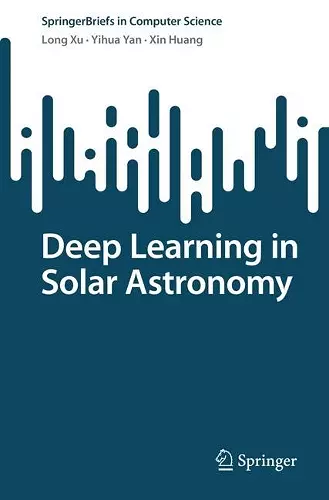Deep Learning in Solar Astronomy
Xin Huang author Yihua Yan author Long Xu author
Format:Paperback
Publisher:Springer Verlag, Singapore
Published:28th May '22
Currently unavailable, and unfortunately no date known when it will be back

The volume of data being collected in solar astronomy has exponentially increased over the past decade and we will be entering the age of petabyte solar data. Deep learning has been an invaluable tool exploited to efficiently extract key information from the massive solar observation data, to solve the tasks of data archiving/classification, object detection and recognition.
Astronomical study starts with imaging from recorded raw data, followed by image processing, such as image reconstruction, inpainting and generation, to enhance imaging quality. We study deep learning for solar image processing. First, image deconvolution is investigated for synthesis aperture imaging. Second, image inpainting is explored to repair over-saturated solar image due to light intensity beyond threshold of optical lens. Third, image translation among UV/EUV observation of the chromosphere/corona, Ha observation of the chromosphere and magnetogram of the photosphere is realized by using GAN, exhibiting powerful image domain transfer ability among multiple wavebands and different observation devices. It can compensate the lack of observation time or waveband. In addition, time series model, e.g., LSTM, is exploited to forecast solar burst and solar activity indices.
This book presents a comprehensive overview of the deep learning applications in solar astronomy. It is suitable for the students and young researchers who are major in astronomy and computer science, especially interdisciplinary research of them.
“Each application is described with sufficient detail to give the reader an understanding of how AI is used and how its use compares with older tools used for the same purposes. The writing is clear … and an excessive use of acronyms. Relevant images and tables enhance the reader’s understanding; many references accompany each chapter. This book should appeal to those interested in either AI or the field of solar astronomy.” (G. R. Mayforth, Computing Reviews, November 22, 2023)
ISBN: 9789811927454
Dimensions: unknown
Weight: unknown
92 pages
1st ed. 2022